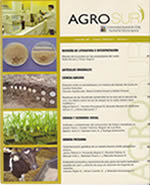Bagazo producido en la industria cervecera: Alternativas de valorización y reutilización
Contenido principal del artículo
Resumen
Los residuos lignocelulósicos se generan en muchos sectores de la industria agroalimentaria y, si se procesan adecuadamente, pueden utilizarse en la industria para producir una variedad de otros productos de alto valor agregado. Un residuo ampliamente disponible es el bagazo de cerveza (grano gastado de cervecería), que es el producto resultante de la maceración del grano de malta, quedando como el principal residuo, abarcando alrededor del 85% de los residuos generados, produciéndose en gran cantidad, ya que la producción mundial de cerveza en 2021 fue de 1.860 millones de hectolitros. El bagazo tiene un alto contenido de humedad y está compuesto por biomasa lignocelulósica, con un contenido importante de proteínas, fibras, lípidos, cenizas, vitaminas, aminoácidos y compuestos fenólicos. El bagazo de cerveza se puede utilizar como alimento para ganado, ya que es rico en proteínas y no causa problemas digestivos. Puede ser utilizado como ingrediente funcional en la industria alimentaria y farmacéutica, aportando fibra y proteína a los productos. También puede servir como sustrato para la producción de biogás, enzimas y compuestos en la industria alimentaria, o como alimento para insectos, que a su vez generan compuestos para otros productos. Otro uso es como fuente potencial de proteína para alimentos acuícolas, pero requiere un procesamiento previo. También puede utilizarse para hacer harina y enriquecer productos alimenticios, generando beneficios nutricionales y económicos. Existen múltiples formas de valorizar estos residuos y aún quedan desafíos por abordar. Es importante que todos los eslabones de producción y uso trabajen articulados para lograr una economía circular.

